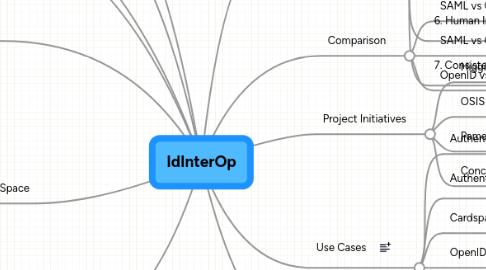IdInterOp
by G K

1. Introduction
2. Problem Statement
3. Standards
3.1. SAML 2.0
3.1.1. Assertion
3.1.2. Protocol
3.1.3. Encryption
3.1.4. Signature
3.1.5. Profiles
3.2. OpenID 2.0
3.3. InfoCard
3.3.1. CardSpace
3.4. XRI
4. CardSpace
4.1. Methods
4.1.1. Self-issued card
4.1.2. Managed Card
4.1.3. Kerberos Ticket
4.1.4. X.509 Cert
4.2. Identity Selector Interoperability Profile
4.3. Mechanisms
4.3.1. WS-Trust
4.3.2. WS-SecurityPolicy
4.3.3. WS-MetadataExchange
5. Higgins
5.1. Components
5.1.1. i-cards
5.1.2. IDAS
5.1.3. Identity Selector
5.2. Digital Me
6. Background
6.1. MS Passport
6.2. Single Sign On
7. Scope
8. Laws of Identity
8.1. 1. User Control and Consent
8.2. 2. Limited Disclosure for Limited Use
8.3. 3. The Law of Fewest Parties
8.4. 4. Directed Identity
8.5. 5. Pluralism of Operators and Technologies
8.6. 6. Human Integration
8.7. 7. Consistent Experience Across Contexts
9. Project Initiatives
9.1. Higgins
9.2. OSIS
9.3. Pamela
9.4. Concordia
10. Use Cases
10.1. Authenticate to a CardSpace enabled relying party using an OpenID URL identifier
10.2. Authenticate to a OpenID enabled relying party with a CardSpace card over CardSpace protocol
10.3. Cardspace enabled SAML Attribute Authority for attribute exchange
10.4. OpenID enabled SAML Attribute Authority for attribute exchange
10.5. Authenticate to a Cardspace enabled relying party with Higgins iCard
10.6. Higgins enabled SAML Attribute Authority context provider
10.7. Authenticate to a Higgins enabled relying party with OpenID URL identifier
11. Questions?
11.1. Difference between Higgins i-card & CardSpace Infocards
12. Comparison
12.1. SAML vs OpenID
12.2. SAML vs CardSpace
12.3. OpenID vs CardSpace


